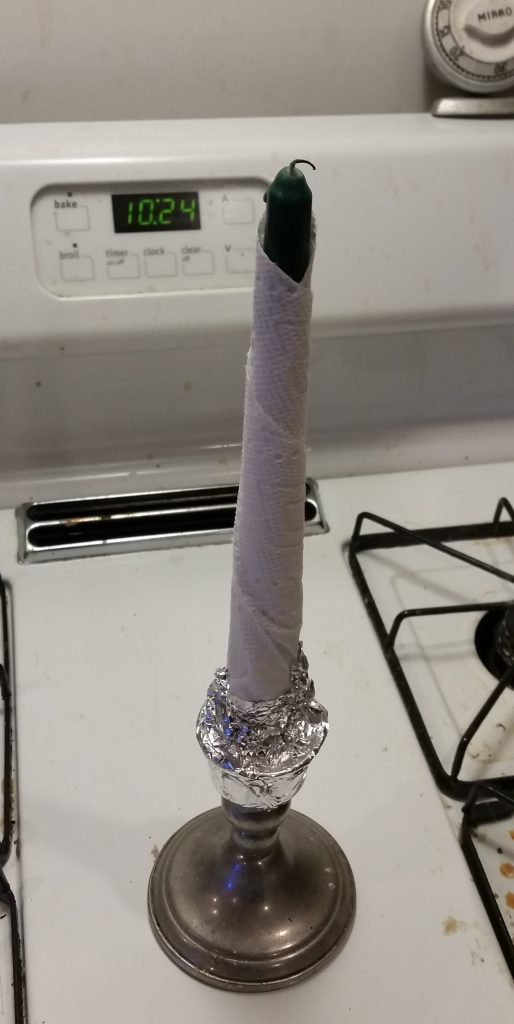DISCLAIMER: This experiment involves rather a lot of fire, and could cause a lot of damage or harm if not done properly. This information is provided for educational purposes only. Do not try this unless you know what you’re doing. Kids, get your parents’ permission (and help) before you do this. Have a plan to safely extinguish it, and a fire extinguisher in case that plan fails.
The image of a candle usually brings to mind serene, romantic images — candle-lit dinners, candles in the window of homes from yesteryear, and life in general as it was a century or more ago — a more peaceful and relaxed era.
To an engineer, though, a candle is fundamentally a machine for combining oxygen (air) and fuel (wax) through the process of combustion. Normally, this is a nice, regulated process, and the candle provides a calm, relaxing glow for several hours.
…but what if it could be “overclocked”…?
We have plenty of oxygen — it’s in the air. We also have plenty of fuel available — if perhaps not yet in the correct form for high-speed combustion. What we need is a way to combine these more quickly.

Wrap the candle tightly in a paper towel. Ideally, the towel should extend up to the top. (I’m not very good at this yet.)
Wrapping a paper towel tightly around the candle allows it to act as a wick — one with a much larger surface area than the candle’s original string wick. When the paper towel is lit, it heats up the wax next to it, melting it and causing it to flow into the unburned portion of the paper towel. From there, the same wicking action normally at work in the middle of the candle converts the entire outside of the candle into one big combustion zone.
Have fun — but stay safe!



